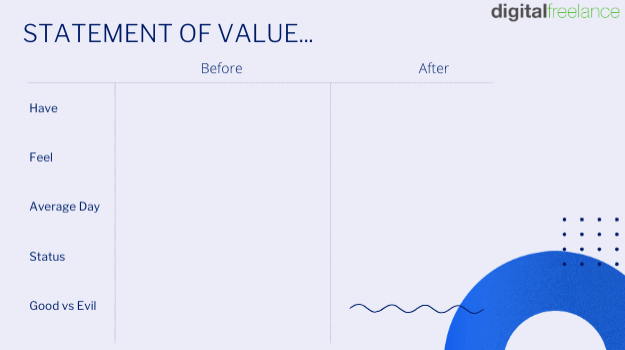Many coaches, trainers, and consultants that we work with are great at achieving results for their clients but struggle to acquire new clients, feel very confident when delivering their programmes, yet are very insecure when enrolling clients into their programmes, and even though they are highly qualified and skilled at delivering results, they hold back because they don’t want to be seen as too pushy or salesy. In short, they lack a process for enrolling new clients.
What if you could use your professional skills more effectively in the context of enrolling people so that you can create more impact and more value?
In this article you’ll discover…
- How to frame an enrolment conversation and know that you have helped your prospective client to make a good decision (even if it is not to buy your service)
- Know that you have helped your new client during the conversation to enrol him or her into your training, coaching or consulting programme as much as when you are actually delivering the programme
- A step-by-step professional process to sign up new coaching, training or consulting clients (without being pushy or salesy)
How to frame an enrolment conversation to help your prospective client to make a good decision
Before the session you need to be clear on your solution frame – consider carefully what problems you can solve and what goals you can help people achieve- be as specific and clear as you can be.
The Statement of Value Method described below is a good way to make a clear distinction between the problem that your prospective client has and the solution that you provide.
Opening Frame: “How can I help?” works really well to get the other person talking.
Typically they will describe the problem they are experiencing and the goal they desire to achieve.
Closing Frame: Be Silent. Wait for the response.
Listen and observe carefully.
How to know that you are helping people in a conversation to enrol them in your programme
This quote by Seth Godin really helped me to shift my attention from selling to a prospective client to working with them to make a good decision.
“Perhaps instead of talking about prospects and customers, we could call them students instead
- Where are your students?
- What will they benefit from learning?
- Are they open to being taught?
- What will they tell others?
This isn’t the student-teacher relationship of testing and compliance. And it’s not the power-dynamic of sexism or racism. It’s the student-mentor relationship of enrollment and choice and care.” Seth Godin – This is marketing
Find The Transformation
Many coaches, trainers, and consultants know how to identify the problem or goal, very few have experience creating a gap between the problem and the solution.
By eliciting the statement of value you can help your student identify the transformation they want to accomplish – this is the essence of good marketing.
After you have done this a few times you will see the consistent patterns and you can create a process flow template to describe the transformation in a way that your client will understand.
Statement of Value Method to identify the transformation you provide

A Step-by-step process to sign up new coaching, training or consulting clients, professionally
Step 1: Opening Frame – Establish Rapport
Build rapport and ask “How can I help?”
- Listen to what the client says carefully using a set of questions you have pre-defined to make sure that you understand the problem and qualify that your solution solves the problem
- Expand your questions as you progress and gain more experience so that you improve your ability to identify people you can help
Step 2: Quantify the problem
- This could be a tangible quantity e.g. Profit Revenue, Cost of Goods Sold, or a Scale of 1 to 10, or a timeframe, or the results from a survey in the context of a qualitative measurement ike progress in leadership, for example.
- Document the number to give a baseline for the transformation
Step 3: Quantify the solution
- This could be a tangible quantity e.g. Profit Revenue, Cost of Goods Sold, or a Scale of 1 to 10, or a timeframe, or the results from a survey in the context of a qualitative measurement ike progress in leadership, for example.
- Document the number to give a baseline for the transformation
- The difference between step 2 and step 3 is the gap.
Step 4: Describe the Opportunity/Offer
- We recommend that you have a range of different offers with different benefits and price points
- We have found that being upfront about price points is the best strategy
Step 5: Describe who the offer is for (and who it’s not for)
The more specific you can be about the people that you can help, the better.
This is best achieved by looking at your existing client base and looking at their behaviour, psychographics, demographics you will have better case studies for articulating the transformation that you can accomplish for these people.
Step 6: Utilise your Statement Of Value template to break down the transformation you provide into steps and help the client to complete the information.
The template has 2 columns – before and after.
Looking at the template – the first row is “have” – what problem does your student have before they interact with you and your product/service?
what solution does your student have after they interact with you and your service?
Moving on to the second row – “feel” – how does your student feel before they interact with you and your product/service?
how does your student feel after they interact with you and your product/service?
Now for the third row which is “average day” – how is your student experiencing the problem on a daily basis? What are they doing to look for a solution?
how does your student experience your solution on a daily basis after they have experienced your product/service?
What has changed?
Finally, the fourth row is “Status” – we typically use a car analogy here – if before is a Ford Fiesta, after is a Rolls Royce.
The fifth row is “Good vs. Evil”.
We prefer to market based on Unique Selling Proposition rather than against the competition, so we don’t use this distinctionmuch.
Step 7: Describe the transformation that you provide in the language of the person you are having a conversation with
Avoid coaching speak and turn your case studies into stories to demonstrate the transformation you provide.
Step 8: Identify and handle Objections – the reasons that people don’t buy from you.
Step 9: Articulate your USP
Even though this may take some time it’s well worth the effort to discover what maks you unique.
Step 10: Outline the plan
To help your prospective client achieve the goal that they desire or solve the problem that they have, feel better and be perceived as they want to be perceived and become who they want to be with a clear timeframe.
Step 11: Closing Frame
There are a few common responses…
- So what’s the next step?
- I’m talking to a few other people
- I have a few questions
- I don’t know if I will get the results
- I need to talk to my business partner, significant other, advisor, etc.
Ready to design your enrolment process?
Let’s have a chat to see how we can help…






